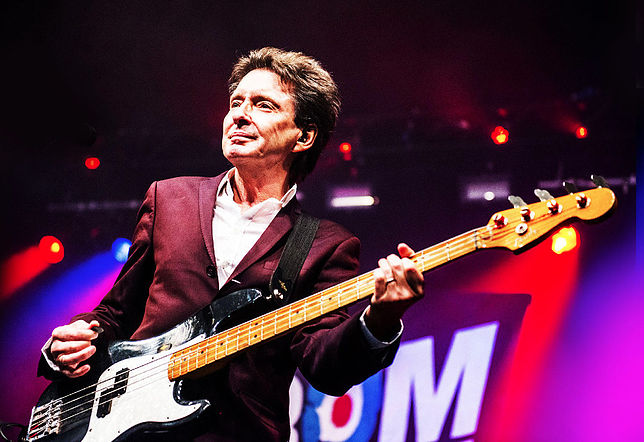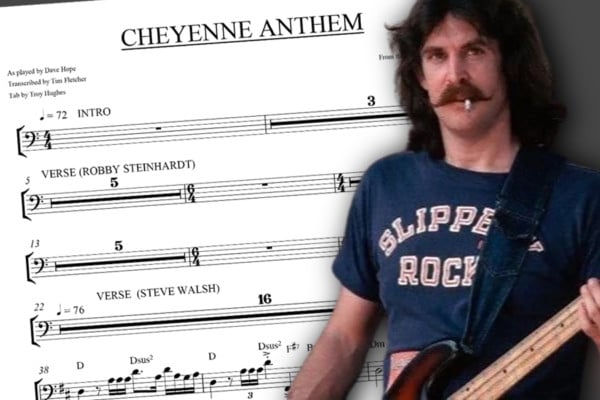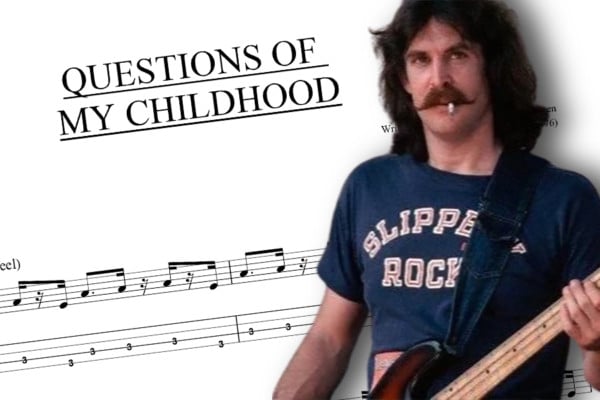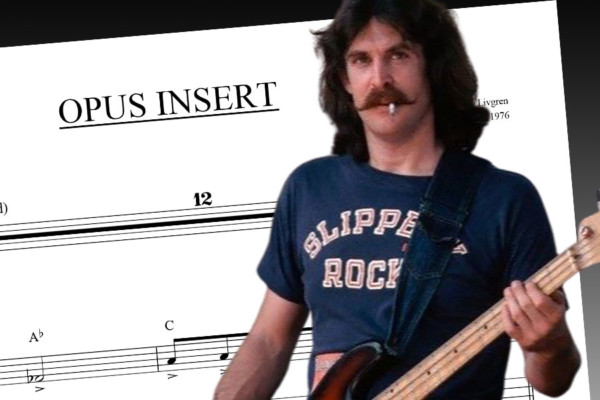Bass Transcription: Bruce Foxton’s Bass Line on “Start!” by The Jam

The Jam was a very successful British band that achieved considerable chart success, with 18 top 40 singles and four number ones. They also released six top 20 albums and gained wide critical acclaim for their song-writing. Although their early hits were considered New Wave, the band blended a wider range of influences into their material than many of the bands of the genre.
The group originally formed while they were at high school, and were initially a quartet. Although their material consisted of rock n roll covers at first, they were later influenced by 60s bands like The Who, The Small Faces and The Kinks. The emergence of punk also became part of the sound of The Jam, as guitarist/vocalist Paul Weller and bassist Bruce Foxton went to watch one of The Sex Pistols early gigs and were radicalized by what they experienced. Weller’s songs began to have a more political slant, and this, along with high-tempo songs and an aggressive performance style, meant that the band fitted in well with the punk sound of the mid-seventies. This helped the band to be signed by Polydor records in 1977.
The band’s early hits and their defined visual appeal (sharp suits and short hair, unlike the recent punk look) were the focus of a Mod revival in the UK in the late 1970s and early 1980s. Other Mod bands such as Secret Affair and The Lambrettas found chart success around the same time and a film version of the Who’s Quadrophenia helped to promote the genre. As The Jam explored the Mod sub-culture more deeply, they were exposed to Motown, Stax and Atlantic soul and they gradually adopted a more R & B sound that can be heard on their later songs. Soon after their final album, The Gift was released in 1982, Weller unexpectedly announced the band’s dissolution, and he formed a new group The Style Council, which had a more sophisticated pop sound. Weller later had a successful solo career.
Foxton was born in Surrey, UK, in 1955, and formed his first band with workmates at his job at a print works. This didn’t work out, and he eventually joined Paul Weller, guitarist Steve Brooks, and drummer Rick Buckler in The Jam. Initially Weller was the bassist and Foxton played second guitar, but they agreed to exchange instruments after Brooks left the band. Apart from playing bass, Foxton took some of the vocal duties in The Jam, singing on some of the band’s hit singles, and wrote some of the material.
After The Jam broke up, Foxton recorded a solo album Touch Sensitive and had some limited success on the singles charts, but eventually joined Irish punk rockers Stiff Little Fingers in 1992, with whom he played until 2007. Foxton was also a member of The Casbah Club from 2004 to 2008, with Simon Townshend (brother of Pete Townshend of The Who) and former Big Country members Mark Brzezicki and Bruce Watson. In 2007, Foxton and Jam drummer Buckler formed From the Jam to showcase their former band’s songs, and they toured successfully with this band in several countries, although Buckler left the band in 2009. Foxton’s second solo album Back in the Room was recorded in 2012 and was recorded at Paul Weller’s studios, and he also guested on a few tracks. A third solo album Smash the Clock was released in 2016.
Foxton was strongly Influenced by Paul McCartney and John Entwistle, but his playing also has features of R & B, especially from recordings on the Motown and Stax labels. Although perhaps best known for playing Rickenbacker basses in The Jam, Foxton has also played Fender Precision, Aria, Epiphone Rivoli and Waterstone basses.
“Start” has a bass line very much like the one played by Paul McCartney’s on The Beatles’ “Taxman”. The bass part in the intro begins with a root and octave followed by a hammer-on between the fourth and fifth and then the seventh before returning to the octave. The bassline changes rhythm when the verse begins, using a quaver-crotchet-quaver idea on the third and fourth beats, and this continues through the chord changes until the thirteenth bar when the intro idea returns.
At bar fourteen, an ascending straight quaver figure appears, based on the root, second, third, fourth and fifth of each chord for three bars before descending to begin the intro idea again at bar eighteen. The next verse contains the same bass line as in the first verse, and then the quaver line is played as before. The original riff returns at bar thirty-five, but in this bar, Foxton includes a Bb note before returning to the octave at the end of the bar.
A less frantic section at bar thirty-nine used the same note order as the original riff, but the rhythm is simplified to crotchets and quavers. Behind the guitar solo from bar forty-seven, Foxton takes the idea seen before at bar thirty-five and uses it until a short return of the original riff at bar fifty-one. The less frantic chorus section re-appears after this, and this is followed by the outro which alternates between G and D chords, with Foxton utilizing the alternate lick idea from bar thirty-five again to begin each four-bar section, ending on a sudden stop.
Follow along with the transcription and the video:



This is VERY influenced by Paul McCartney, to the point of being pretty much a direct copy of Taxman. But I love it anyway.